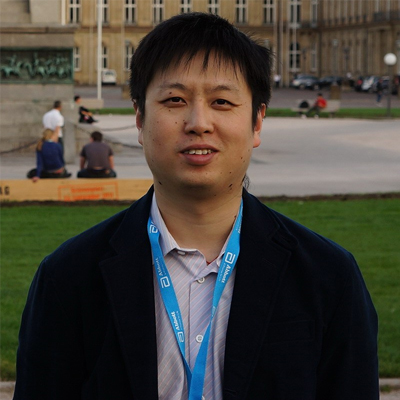| This month we hear from Jiangtao Tang from the West China Hospital, who shares about the challenges they are overcoming at his centre switching from immunoassay to mass spectrometry based assays and automation of sample pre-processing. Jiangtao further shares his vision how metabolomics and proteomics, together with bioinformatics, will optimize patient care.
Jiangtao Tang
Department of Clinical Immunological Laboratory, West China Hospital
Sichuan University, Chengdu, CN |
Can you tell us a little bit about your respective roles? What is a typical day like for you?
I am a senior technologist at West China Hospital of Sichuan University. My daily work is focused on the TDM of immunosuppressive drugs. I lead the method performance verification group of the laboratory medicine department and I am responsible for the method performance verification of all tests. I also teach medical students, residents and visiting scholars. My days are typically full of clinical work (too many clinical samples), some teaching and research work.
Is there anything that your laboratory does, or that is done at your hospital, that you would consider innovative?
In our hospital, most of drugs are detected by immunoassay. However, cross-reactivity and instability of the immunoassay limits progress with TDM. We are in the phase of replacing immunoassay with mass spectrometry. This is the kind of innovation we are doing currently.
What technological innovations have entered into use during your career that have permitted a change, or evolution, in practice?
Proteomics and metabolomics have been developing rapidly in recent decades with the advent of mass spectrometry and they have had a major impact on TDM. Consequently, the advent of bioinformatics has greatly enriched the way we study PK/PD. I think this may be one of the development directions of TDM.
How did you become interested in your area of expertise?
My master’s project was focused on the causes and prevention of early renal impairment in liver transplant recipients using calcineurin inhibitors. That was the beginning of my scientific career, and since then I have become more and more interested in the PK/PD of CNIs. After this first project I have been able to attract some grants to continue my research. My PhD-project was about the pharmacogenomics of CNIs. Later I had the opportunity to study at the Erasmus Medical Center for one year as a visiting scholar, under the guidance of Teun van Gelder and Dennis Hesselink. At Erasmus MC I participated in two projects about the PK/PD of immunosuppressants and my knowledge of clinical pharmacology and the PK and PD of immunosuppressive drugs has greatly improved.
Is there anything that you’ve seen or heard about recently and thought “I’d like to incorporate that idea at my center”?
The biggest problem to limit the use of mass spectrometry technology in TDM is the problem of automation, especially the automation of sample pre-processing. Our lab is preparing to implement an automatic on-line sample pre-processing system to shorten the test time and improve test accuracy.
What sort of research do you have on the horizon that you think might influence clinical practice in the future?
Based on bioinformatics, proteomics and metabolomics are the best tools for finding new markers, especially in monitoring pharmacodynamics. There are many potential markers that may reflect the therapeutic effects and side effects of drugs. These markers may be useful for the choosing the right drug or the right dose, but they cannot be detected by traditional methods. Proteomics and metabolomics provide the possibility to detect these markers and my prediction is that they will play a key role in clinical practice.
What do you consider is the future for TDM and CT? What are you excited about? What are the challenges we face?
More and more laboratory workers and medical doctors now recognize the importance of TDM, also in China. More and more new TDM technologies are being used to improve the accuracy and timeliness of test results. More and more PK/PD modeling is used to decide on the best next drug dose. And more and more patients benefit from the development of TDM. So the future is bright.
The content of the IATDMCT Blog does not necessarily have the endorsement of the Association.



